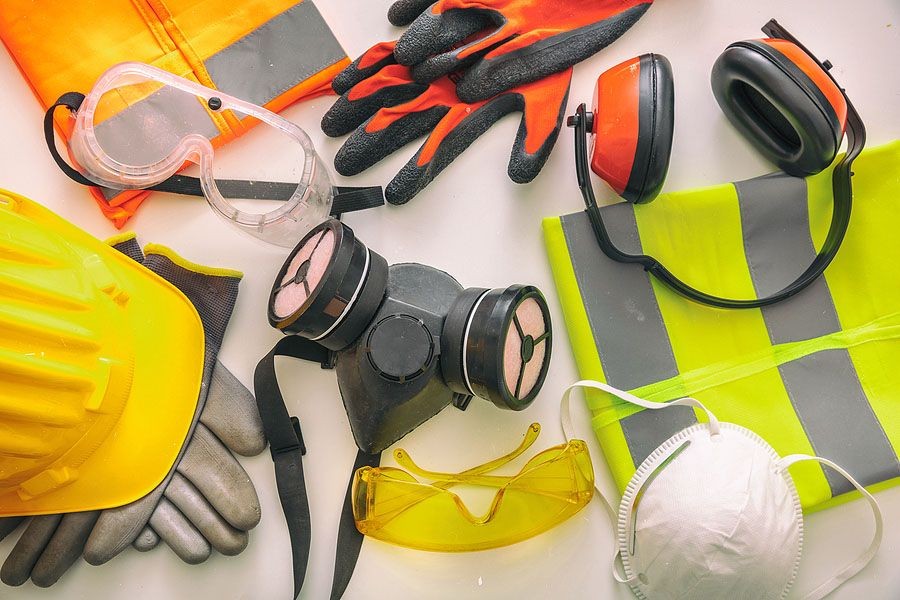Introduction to Woodshop Safety: The Importance of Personal Protective Equipment (PPE)

Woodworking is a fulfilling and creative hobby, allowing you to transform raw wood into beautiful and functional pieces. However, it’s crucial to prioritize safety in the woodshop to ensure both your well-being and the quality of your work. This introduction will focus on the significance of Personal Protective Equipment (PPE) in woodworking, outlining the essential gear that every woodworker should have at a minimum.
1. Safety Glasses: Protecting Your Vision
– Safety glasses are an absolute must in the woodshop. They shield your eyes from flying wood chips, sawdust, and other debris generated during cutting, sanding, and shaping wood. Choose glasses with impact-resistant lenses for maximum protection.
– I personally find that easy on / easy off safety glasses are the most important. If I cannot quickly put them on then they are often never put on. Clear lenses work best for me as well to maintain coloration. While the price range of safety glasses can be significant, I have found that having 2-3 pairs of cheap glasses floating around the workshop works best.
2. Hearing Protection: Preserving Your Hearing
– Woodworking often involves the use of loud power tools. Prolonged exposure to this noise can lead to hearing damage. Protect your ears with earmuffs or earplugs designed for woodworking environments.
– By far the best hearing protection I have found in the 3M Worktunes system. Not only does this provide full coverage ear muffs, it has high quality blue tooth speakers integrated so that you can listen to music, audiobooks, podcast, or whatever you like as you work. These are specifically designed for construction/workspaces as well and are very durable.
3. Dust Mask or Respirator: Breathing Clean Air
– Wood dust is a certain byproduct of woodworking, and inhaling it can lead to respiratory issues. A dust mask or respirator with efficient filtration is essential for maintaining good air quality in your lungs while working. In addition, many wood finishes include VOCs for which a respirator should be worn to prevent chemical respiratory harm.
– I generally recommend a N95 level mask for dust control / safety. When applying finish I recommend 3M basic respirator which the filters can be exchanged as needed. Occasionally carbon filters can be used for highly volitile compounds.
4. Closed Toed Shoes: Ensuring Foot Safety
– Closed toed shoes protect your feet from heavy objects. Shoes with slip-resistant soles should also be sought after to reduce the risk of accidents in the workshop. Finally, comfort is imperative as many hours standing is common in the workshop.
– Snibbs shoes were originally designed for healthcare application – however they have many features that make them ideal for the workshop. They are water resistant, have non-slip traction, and are specifically designed for people who are on their feet all day to maintain comfort and arch support.
5. Gloves: Hand Protection
– Wearing gloves while woodworking is advisable to protect your hands from splinters, sharp edges, and cuts – especially when handling rough lumber. In addition, disposable gloves provide a physical barrier to help decrease any irritation when applying finish, stain, or cleaning solvents.
– Of note, gloves should not be work when operating a saw or other tool with a spinning blade or belt as they may catch on the glove which can pull your hand into the mechanism causing harm.
Conclusion:
Personal Protective Equipment (PPE) is the foundation of woodshop safety. These essential items are your first line of defense against potential hazards in the workshop. Whether you’re a novice or an experienced woodworker, investing in the right PPE ensures your safety, allowing you to enjoy woodworking to the fullest while minimizing risks. In post, we will dive deeper into other safety equipment, exploring their features and benefits, so you can make informed choices and create in a safe and secure environment. Stay tuned for more detailed insights into woodworking safety!
